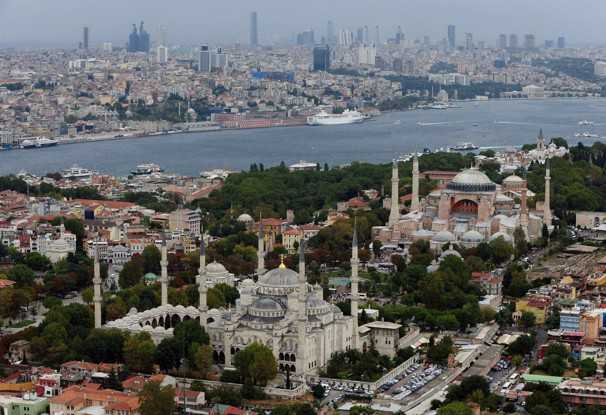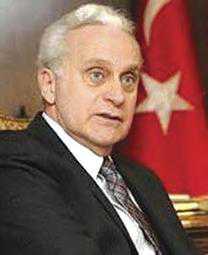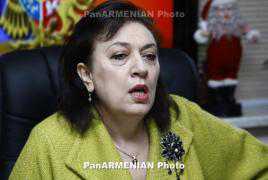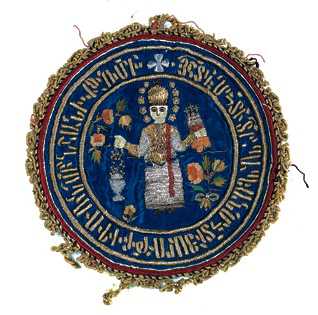The recent resignation of Turkey’s military high command, along with reports that Prime Minister Recep Tayyip Erdoğan will subordinate the military to civilian rule, could mark a new era for that nation. Sweeping constitutional changes, however, are still needed to ensure fundamental rights and avoid exchanging one form of repression for another. The United States should challenge Turkey’s civilian leadership to make such long-overdue changes, especially regarding religious freedom, including for religious minorities.
While Turkey has long been a formal democracy, it has been a decidedly imperfect one. Since Kemal Ataturk founded the Republic of Turkey in 1923, his rigid state secularism has stifled religious freedom. Restrictions have hindered the majority Sunni Muslim community and have discriminated against and threatened religious minority communities, including Greek, Armenian, and Syriac Orthodox Churches; Catholic and Protestant Churches; the Jewish community; and the Alevis.
Constitutionally, the military was the protector of the secular state apparatus that engaged in or tolerated religious freedom violations. Indeed, the context for the recent military resignations was Erdoğan’s refusal to promote officers who allegedly plotted within Ergenekon, a clandestine ultranationalist group, to topple his Islamic-oriented government and commit violence against numerous faith communities and their houses of worship.
As the inheritor of this legacy, Erdoğan and his AK Party have faced an uphill battle to deepen Turkey’s democratic institutions and culture. Their moves to bolster civilian rule have positive implications for respecting international human rights norms, including religious freedom.
Indeed, the AKP government has widened the opening for public religious expression, which has helped Turkey’s Sunni Muslim majority. Since 2007, imams have had some autonomy in drafting their sermons. While the ban on religious dress in state institutions continues, last month, the Council of State overturned Turkey’s high court ruling which had barred the wearing of headscarves during the Selection Examination for Academic Personnel and Graduate Studies. Enrollment in Imam-Hatip religious schools has expanded notably. Without a doubt, Sunni Islam flourishes.
When it comes to religious minorities, however, Turkey’s record remains disappointing.
To be sure, the AKP government has ushered in some improvements, including the addition of worship services allowed for a particular church, citizenship for the leaders of another, accurate national identity cards for converts, and continued engagement with Alevis. Yet, Turkey’s widely publicized constitutional reform process currently omits any attention to religious freedom, thereby suggesting no systematic relief for Turkey’s smallest minorities, such as Christians and Jews.
Turkey’s Christian minority has dwindled to just 0.15 percent of the country. In the words of one church leader, it is an “endangered species.” In past centuries, violence exacted a horrific toll on Turkey’s Christians and their churches. This provides a frightening context and familiar continuity to a number of recent high-profile murders by ultranationalists.
Turkey’s Jewish community also fears a reprise of past violence, such as the 2003 al Qaeda-linked Istanbul synagogue bombings. Societal anti-Semitism has been fueled in recent years by Erdoğan’s rhetoric against Israel’s activity in the Middle East and by negative portrayals in Turkey’s state-run media.
Today, however, it is the state’s dense web of regulations that most threatens Turkey’s religious minorities.
Religious communities are being strangled by legal restrictions on internal governance, education, houses of worship and wider property rights. It is difficult even to have a frank national discussion about their plight; those who have tried can face constitutional charges for insulting “Turkishness”, as well as a broader climate of impunity.
One example of the oppressive regulatory climate is the meddling in internal governance, as seen in the interference in the election procedure for the acting Armenian Patriarch, as well as in the refusal to recognize the title of “ecumenical” of the Greek Orthodox Church’s Ecumenical Patriarch and the inherited titles of Alevi leaders.
Another is the government’s refusal to allow non-Muslim clergy to be trained in Turkey. The military’s shuttering in 1971 of the Greek Orthodox Theological School of Halki, once the educational center for global Orthodox Christianity, is a case in point. Successive governments’ policies have put at risk the very survival of the Ecumenical Patriarchate and its Greek Orthodox flock.
A third example is the expropriation of land from the 1,600-year-old Mor Gabriel Monastery, the world’s oldest Syriac Orthodox monastery. Last January, Turkey’s Supreme Court granted its treasury parts of the monastery’s territory. Besides impacting the church, such arbitrary state expropriations encourage acts of impunity against all religious minorities.
Finally, there is the status of the Alevis, the nation’s largest religious minority. Turkey refuses legal recognition of Alevi meeting places (cemevi) as houses of worship, and has denied them construction permits.
These examples underscore how Turkey’s religious minorities still lack full legal status and are deprived of full rights as citizens. To help remedy this injustice, the United States should urge Erdoğan to fulfill his pledge to amend the military-drafted constitution of 1982 by making changes in line with religious freedom and the other human rights guarantees found in the International Covenant on Civil and Political Rights, which Turkey ratified.
By strengthening civilian control, Turkey has an opportunity to chart a clearer course toward greater freedom for all its citizens. It’s time for the country’s leaders to embrace constitutional reform, end impunity, protect religious diversity, and advance religious freedom for every citizen.
Elizabeth H. Prodromou serves as Vice Chair of the U.S. Commission on International Religious Freedom (USCIRF). Nina Shea serves as a USCIRF Commissioner. Both authors traveled to Turkey in February 2011 as part of a USCIRF delegation.







